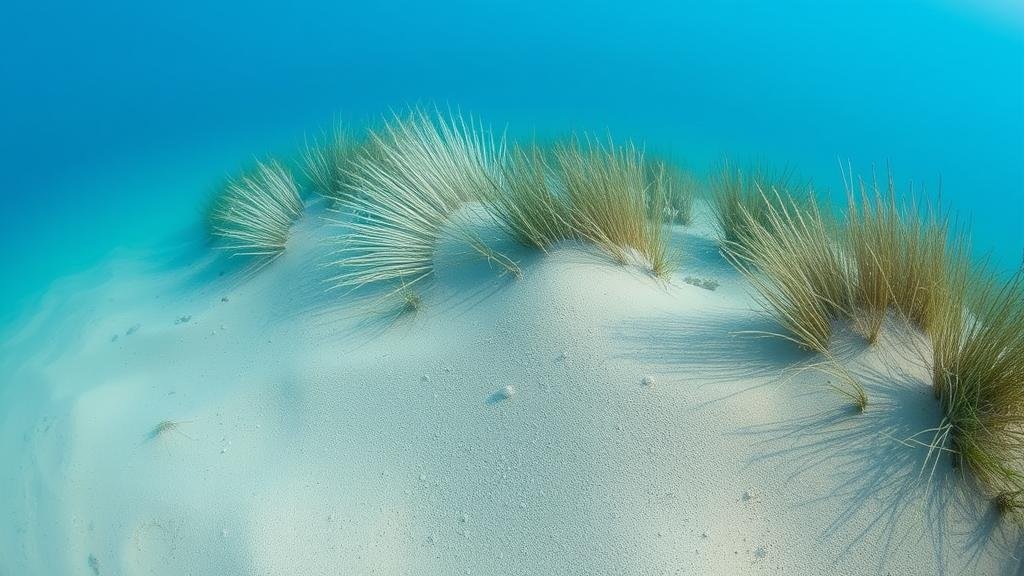Spotting Evidence of Maritime Relics in Underwater Sand Dunes
Spotting Evidence of Maritime Relics in Underwater Sand Dunes
The exploration of underwater sand dunes presents unique opportunities for archaeologists and maritime historians. These natural structures, formed by sediment movement and hydrodynamic processes, often conceal relics from past maritime activities, including shipwrecks, cargoes, and artifacts. This article delves into the methodologies, technological advancements, and case studies associated with locating maritime relics beneath underwater sand dunes.
The Formation of Underwater Sand Dunes
Underwater sand dunes are primarily shaped by the interplay between current flows and sediment transport. e geological structures can be found in various marine environments, from coastal areas to deeper waters. Understanding their formation is critical in archaeological surveying as they influence the distribution and preservation of submerged artifacts.
Research indicates that underwater sand dunes can vary in size and shape, depending on sediment type, water depth, and hydrodynamic conditions. For example, as noted by a study published in the Journal of Marine Science, tidal currents and wave actions in an estuarine environment can result in the formation of large, crescent-shaped dunes that can obscure significant cultural resources.
Methodologies for Spotting Maritime Relics
Finding maritime relics in underwater sand dunes requires a combination of traditional archaeological methods and modern technologies. following are key methodologies utilized in this complex process:
- Remote Sensing: This technique uses sonar and electromagnetic tools to map the seafloor and identify anomalies that may suggest the presence of wreckage or artifacts.
- Sub-Bottom Profiling: Used to penetrate sediment layers, this method helps distinguish between geological features and man-made structures.
- SCUBA Diving and ROVs: Direct exploration through Scuba diving or remotely operated vehicles (ROVs) is essential for visual confirmation and artifact retrieval.
For example, the use of side-scan sonar has revolutionized underwater archaeology. This technique has been notably effective in identifying shipwrecks engulfed by sediment and time. A case study off the coast of Florida showcased the successful use of side-scan sonar to locate a 19th-century shipwreck buried beneath a sediment-laden dune.
Challenges in Discovery
While the methodologies in use are advanced, challenges persist in the discovery of maritime relics within sand dunes. e include:
- Dynamic Sediment Movements: Continuous changes in underwater sand dune formations can either bury or expose archaeological remains, complicating the search process.
- Visibility Issues: Reduced visibility due to sediment suspension in water can hinder effective archaeological exploration.
- Legal and Ethical Considerations: Navigating ownership and excavation rights can pose significant barriers to research and exploration.
As a noteworthy example, the exploration of the USS Oriskany, a decommissioned aircraft carrier turned artificial reef, faced considerable legal and environmental challenges. The presence of shifting sand dunes complicated both search operations and preservation efforts, underlining the complexities the archaeological community must navigate.
Case Studies and Real-World Applications
Numerous case studies exemplify successful expeditions focusing on underwater sand dunes:
- The Black Sea Maritime Archaeology Project: This initiative utilized an array of remote sensing technologies to uncover ancient shipwrecks associated with trade routes, decisively influenced by geological formations resembling sand dunes.
- The Recovery of the Nuestra Señora de las Maravillas: A 17th-century shipwreck discovered off the coast of Florida was located within a vast underwater dune field, demonstrating how sediment can both conceal and protect historical treasures.
Such projects illustrate the potential of underwater archaeological research in contributing to our understanding of historical maritime activities and navigation practices.
Actionable Takeaways
To maximize success in spotting maritime relics in underwater sand dunes, practitioners should consider the following strategies:
- Integrate advanced remote sensing technologies to obtain clear geospatial data.
- Conduct thorough historical archival research to corroborate excavation sites with known shipwreck legends and documented maritime activity.
- Collaborate with local universities and research organizations for resource sharing and expertise development.
- Ensure adherence to legal protocols and ethical standards in archaeological exploration to foster community trust and cooperation.
The rich history concealed within underwater sand dunes offers an exciting frontier for maritime archaeological research. By leveraging modern technology and collaborative efforts, researchers can uncover and preserve invaluable maritime relics for future generations.



